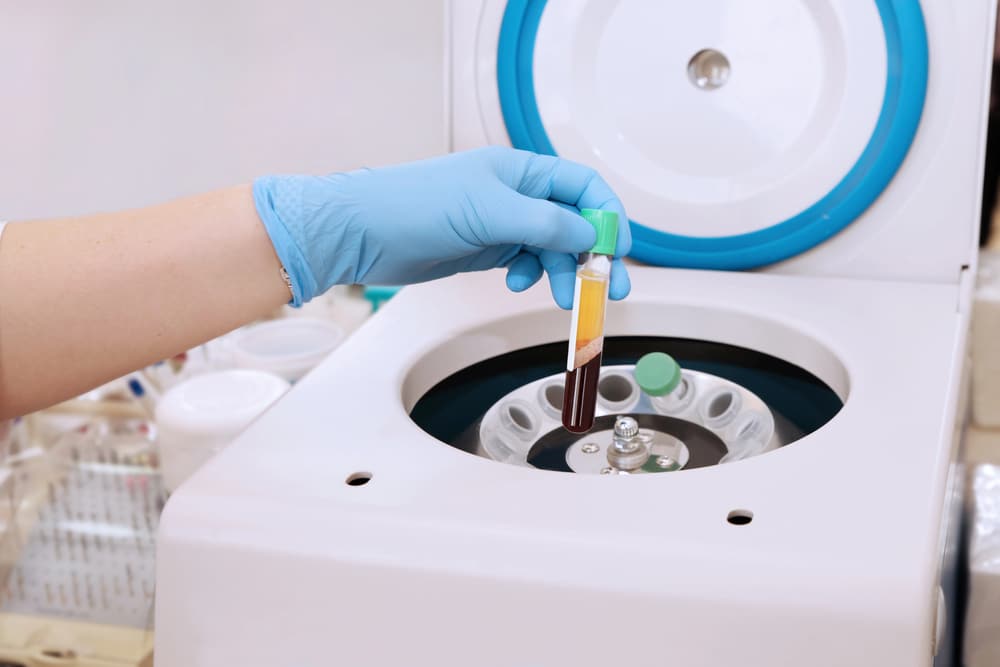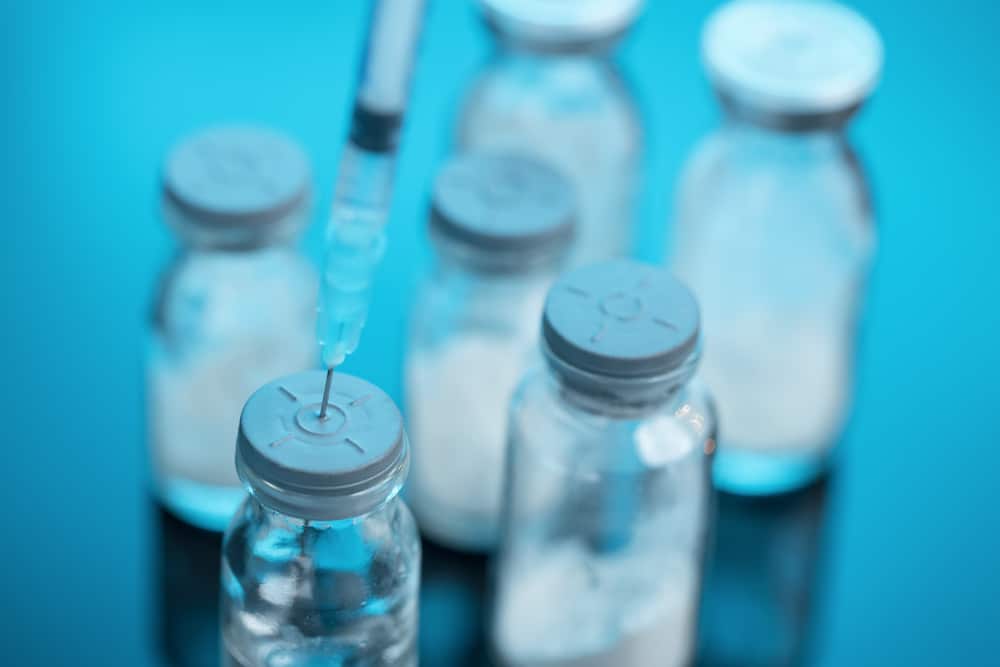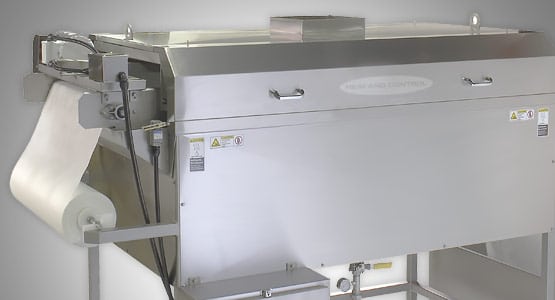According to Nonwovens Industry:
Known for is flexibility and low start-up investment, nonwovens producers continue to invest in new needlepunch equipment to serve a range of markets including filtration, automotive, construction, geotextiles, acoustics, artificial leather and more. New needlepunch investments include Bondex, Fibertex Nonwovens and Foss Floors in the U.S., Puerko in Poland, Chongqing Double Elephant Microfiber Material in China, Thrace Group in Greece and the U.K., and Scavone in Brazil. The needlepunch market has also gone through a period of consolidation in recent years, with Lydall’s acquisitions of Texel (Canada) and Gutsche (Germany), Freudenberg’s purchase of Slovenian company Filc, and Jones Family of Companies’ acquisition of Rontex America in New Hampshire.
While investment in the technology slowed down early last year at the onset of the Covid-19 pandemic, machinery suppliers are reporting an uptick in new orders.
Machinery expert Autefa Solutions has even seen a growing interest in needlepunching technology for hygiene applications and special cleaning wipes. “This certainly has to do with the Covid-19 pandemic,” says Marco Fano, global sales director, Autefa Solutions.
Jean-Philippe Dumon, sales director, Nonwoven, of machinery specialist Andritz Asselin-Thibeau, says that during the first half of 2020, the Covid-19 pandemic drastically reduced investments in the needlepunch sector, except for processes in connection with medical and hygiene purposes. However, in August 2020, the market changed drastically and there was enormous activity on orders for new needlepunch equipment. “The situation has not changed since then, to the point of creating severe difficulties in meeting delivery deadlines,” he says.
According to Dumon, needlepunching is the most versatile nonwoven process available. “It is quite amazing how the needlepunch industry has been resilient to the Covid pandemic,” he says. “Many of our customers have started to produce masks or mask components with great success as there was a considerable shortage of surgical masks in the western world.”
DiloGroup, another expert in needling machinery, also witnessed recovery in the market following challenges associated with the pandemic. “2020 certainly was a difficult year where a weak economy was in further decline and, at the beginning of the year, the Covid-19 pandemic has brought more stress to the market,” comments Johann Philipp Dilo, CEO, DiloGroup. “In the last quarter, however, the business environment changed completely foremost due to the recovery of China. So the downturn was followed closely by a speedy recovery and this year 2021 will be carrying us back to normal or even above average as a good year.”
According to Dilo, the growth rate of production and consumption of needlepunched material was between 5% and 6% for many years. “Even though the pandemic will impact this figure, it will only be for a short period before earlier growth rates return,” he adds. “Needlepunching was under-estimated in the past but is now considered the most important and progressive technology associated with high productivity, efficiency and low energy consumption.”
Antonio Carli, sales supervisor of Italian nonwovens producer O.R.V. Manufacturing, says that the pandemic has impacted demand for needlepunch mainly for air filters as well as face masks. In fact, new applications for air filtration and face masks, as well as the automotive industry with special requirements for acoustic and thermal insulation, are driving growth in the market. “Our technology allows us to produce customized products to customers requirements,” he says.
For its part, nonwovens producer Lydall, through its Technical Nonwovens (TNW) division, offers one of the most diversified ranges of needlepunched products in the industry. The products manufactured in its 12 global sites are used in multiple applications such as industrial air filtration, liquid filtration, building material and acoustical solutions, automotive components, geosynthetics, medical and wipes, industrial fabrics, and CIPP. Lydall can manufacture needlepunched fabric from as low as 60 g/m² up to over 2500 g/m² with various fiber types, surface finishes and chemical treatments.
Over time Lydall Technical Nonwovens has developed an expertise in composite and multi-layer materials combining the unique properties of the different materials being combined. One recent example of a new needlepunched composite is its Draintube drainage product, an innovative drainage solution used in civil and environmental works. This patented product is manufactured by a Lydall joint-venture, Afitex-Texel, and consists of one-inch diameter perforated mini-pipes encapsulated between two filter and drainage geotextile fabrics. The Draintube, used in conjunction with other geosynthetics such as protective nonwoven geotextiles and waterproof geomembranes, can drain liquid and gases from applications such as waste landfills, mining tailing pads, sports fields and building foundations.
According to Lydall, in addition to the usual industrial GDP-driven growth from the industrial sector, the development of new fields of application for needlepunched fabrics is bringing additional growth to the needlepunch market. Such new application fields are driven by specific characteristics of the needlepunch felt. “Historically, we only used to see the needlepunch felt in heavier weight and reusable applications,” says Danny Berube, global director business development Lydall TNW. “More recently the technology development (especially with the new machines offering lower coefficient of variation) has allowed the use of needlepunched material in lighter weight applications such as automotive and building material components.”
Lydall also sees a bright future for the use of needlepunch fabrics in applications where the environmental sustainability is a key criteria. The company has seen many nonwoven products being aimed at these greener applications in many fields of application, from building materials to automotive products. The new greener fibers and binders used for manufacturing nonwovens are enhancing the ability to develop products that can replace other technologies with a better environmental footprint. As an example, the natural fiber now being used in some needlepunched material allows for composting of material at the end of their lifecycle.
According to Lydall, the needlepunch market has seen a lot of technological improvement over the last 20 years and the manufacturing process has seen a dramatic throughput increase. This technological evolution has made needlepunched technology a more competitive solution in many fields of applications. “Investment in state-of-the-art equipment with higher throughput has changed the face of the industry over the last two decades,” says John Lewis, North American VP/GM Lydall TNW.
Following this trend and to support its customer base, Lydall Technical Nonwovens proceeded this winter with the start-up of a new production line in its Texel facility located in Quebec, Canada. This new needlepunching line is targeted for growth opportunities in many markets serviced by Lydall including medical, automotive, filtration and industrial applications. This investment has allowed Lydall to balance its production lines more effectively and maximize productivity according to the unique technical capabilities of its equipment.
More Capacity on the Horizon
In other investment news, Polish nonwovens producer Puerko Sp. z.o.o. announced last month it would install an Andritz needlepunch line in Myszków, Poland. The line will process recycling fibers from garment waste for the production of technical felts dedicated to furniture and geotextile applications. The final products will have fabric weights ranging from 300 to 500 gsm, and the production capacity will be up to 750 kg/h. Installation and start-up are scheduled for the third quarter of 2021.
Andritz will supply a complete neXline needlepunch eXcelle line – from web forming to needling – as well as engineering and Andritz’s recently launched scanning gauge. This is the second Andritz line to be supplied to Pureko, thus demonstrating the strong partnership between both companies. Three years ago, Pureko invested in a new, modern plant supplied by Andritz Asselin-Thibeau to produce fluffy nonwovens used in the furniture, textile and clothing industries. The new line will enable Puerko to continue its ongoing growth.
Also investing in Andritz equipment is Chongqing Double Elephant Microfiber Material, which will add four needlepunch lines to its operation in Chongqing City, China. The lines, developed by Andritz to process islands-in-the-sea fibers for high-quality synthetic leather products, will start up in late 2021. They will produce 30 million meters a year of microfiber nonwoven materials.
The production lines are equipped with an Andritz carding machine and the newly developed Profile crosslapper as well as the advanced-technology ProWid closed-loop system. The system can monitor the weight uniformity (CV%) of the entire product online and predict the weight distribution changes caused by the bonding process. In addition, the web weight can be reduced by controlled stretching, which solves the issue of fiber accumulation at the edges caused by traditional crosslapping methods. Both the weight and the uniformity of the product can be automatically adjusted via the closed-loop function as set on the Andritz gauge.
In the U.S., Bondex will expand its manufacturing capacity to increase its needlepunch nonwovens output and capabilities thanks to a new investment at its headquarters in Trenton, SC. The new line will be supplied by DiloGroup and is designed to meet the growing demands of the filtration, PPE and other industrial markets. In addition to needlepunch nonwovens, the company makes hydroentangled and thermal bonded nonwovens for a wide range of applications.
“As a proud member of Andrew Industries Ltd., a privately owned U.K. multi-national manufacturing company, our mission is to bring value to our customers through superior service, innovation and product quality,” says company president Brian Little.
Bondex has been producing technical nonwovens with carded thermal bond technology since 1997, serving markets including reprographics, electrical insulation, filtration, medical and home care.
This new line, which is expected to be fully commercial in the fourth quarter of 2021, is designed to run a variety of fiber types, fineness and staple lengths in a large weight range. Its components include fiber opening and blending, carding, crosslapping, drafting, needling and finishing and is meant to be a workhorse producer of needled felts for roll goods up to 90 inches wide in both fiber-supported and scrim-supported products. Innovative solutions are adapted to this efficient and economical production system with an emphasis on the uniformity of fiber distribution as well as material savings effects. Individual customer requirements and applications can be met through this complete in-house nonwoven production process. All components of the line were installed by Dilo as a general contractor and engineered and assembled to suit the high standards of Bondex in order to provide a state-of-the-art, economical production line for high quality nonwoven products, according to the company.
Likewise, Foss Floors, a specialist in needled carpet, has ordered a new production line from DiloGroup. It will be the fourth Dilo line located at Foss Floors.
In recent years, Foss Floors has become a major player in the sector with Di-Loop carpeting to include structured surfaces in rib and patterned quality. Mainly because of high quality requirements for the carpet product and a wide of modern design patterns, needlefelt floor covering appeals greatly to architects and contractors for homes and commercial buildings.
DiloGroup has engineered this latest high-tech production system as a team together with Foss, tailor-made for its needs. The line will have a large production capacity at high fiber throughput rates, comprising fully automatic fibre opening and blending from Dilo Temafa, carding from Dilo Spinnbau in a wide working width, high-speed crosslapping as well as pre- and finish needling, designed for final product widths over six meters. The specialty Di-Loop machine with high speed feature in a working width of 6.5 meters will complete this production plant for the Di-Loop carpet sector.
Also increasing its needlepunch output is Thrace Group, which announced in September that two needlepunch production lines were added to its European manufacturing plants in Greece (Xanthi) and the U.K. (Scotland).
By significantly increasing its needlepunch production in northern and southern Europe combined, Thrace Group aims to better serve its increasing customer base, both in Europe and abroad. Providing improved product characteristics, better service and further reducing lead times, the group is strengthening its presence among the top providers for the geotextiles, agro-textiles and industrial fabrics markets worldwide.
Needlepunch for Reusable Hygiene Products
U.K.-based Technical Absorbents, maker of superabsorbent fiber (SAF), has the capability to manufacture a wide range of SAF-based superabsorbent fabrics, as well as non-absorbent materials if required. The company invested in its own 2m wide needlefelt line in 2015 which can manufacturer fabrics up to 1000 gsm, containing up to 100% SAF. It also works with a number of partners in order to provide a range of finishes, including additional laminates and slit widths. Where commercially viable, smaller volume runs starting from 1000 sqm are also possible.
For Technical Absorbents, a new range of washable needlefelt fabrics is currently in development. “These fabrics have already been greatly received by hygiene manufacturers innovating in the reusable space,” says Mark Paterson, product development director, Technical Absorbents. “This next generation of fabrics aims to support their needs by enhancing drying times, etc.”
Because of the issues surrounding single-use plastics, the hygiene sector is seeing an increased demand for reusable products. “As a result, many companies are innovating and wanting to develop new or improve existing product ranges,” he adds.
Currently, the focus of Technical Absorbents’ needlefelt is washable fabrics used in reusable hygiene products due to their uniqueness. However, Dr. Paterson says there are many other opportunities for SAF needlefelt fabrics, such as within medical and filtration applications. In fact, a new range of fabrics aimed at the filtration market are also in development. “These laminated fabrics will enhance our offering into the water-removal sector,” he comments.
SAF fabrics can be tailored to meet development needs, for example, more or less needling to add or reduce integrity and also to alter absorbency capabilities of a fabric. “Due to SAF being a fiber, its distribution within fabrics is consistent and additional containment isn’t required to keep it in place,” Dr. Paterson explains.
Suppliers’ Perspectives
According to Fano of Autefa Solutions, in needlepunch there is a general trend for lightweight fabrics, reaching same product properties with less material. “Our customers require machines and lines that are able to produce lightweight fabrics without any compromises regarding material strength,” he says. “With the improved fine opener, the opening of the fibers is more flexible and suitable for any fibers that the market is proposing. Autefa Solutions opening line for low melt fibers allows customers to have the same mechanical and rigidness characteristics with less percentage of those kind of expensive fibers.”
Autefa considers growth in needlepunching technology to be steadily strong. Currently there are lower automotive requests, but artificial leather—also in terms of sustainability—is still strong. They’re also seeing growing demand for filtration and hygiene applications. “Sustainability is a huge topic, worldwide,” Fano comments. “Customers are using replacement fibers like recycled PET fibres, carbon fibers, reclaimed fibers as well as various natural fibers. In the construction and automotive market, recycled materials for efficient thermal and acoustic insulation are key factors that contribute to energy saving and to the reduction of natural resources consumption.”
Regarding its technology, product quality in Autefa Solutions’ needlepunching lines can be monitored and improved with the company’s 3-level Closed Loop Control System. A scanner determines the weight distribution of the final product while the control system corrects the profile in the crosslapper and the feeding section of the card. The crosslapper Topliner in combination of Web Profile Control WebMax prevents the increased weight of the fabric in the edge areas. This eliminates the traditional “smile” effect on cross-directional weight distribution. WebMax profiling is also integrated into the 3- level Closed Loop Control System, which ensures that the fabric is profiled equally in both material direction and cross direction. “This results in an excellent uniformity in the fabric and, thanks to a considerable saving of materials, a reduction in material costs,” Fano explains.
Additionally, Fano says an improved and even surface quality has been set as a key target by the customers. Therefore, for needlepunched nonwovens products Autefa Solutions offers the service of a customized needle board pattern. The needling simulation software i-Point 3.0 increases the capacity and the quality of needlepunched fabrics. This customized design of needle pattern, which takes also draft and shrinkage into consideration, reduces the process optimization time on customer site. “The latest development was designed for a high needle density for faster production speed with almost no needle marks on the felt surface,” he adds.
For DiloGroup, the company’s expertise in needlepunching technology is the strongest pillar of its portfolio. However, the company also supplies complete lines using different consolidation technologies like thermo-bonding, water entanglement or chemical bonding together with its partners. “Since the mid-fifties, Dilo has developed its special needlepunching engineering know-how with many innovative contributions for the further development of this process, be it individual machines, process or product related advances,” Dilo says. “Among those, the circular needling process RONTEX, structuring and patterning techniques DI-LOOP and DI-LOUR can be named, as well as achievements and solutions to speed up the needlepunching process considerably with stroke frequencies of over 3000 per minute and throughput speeds of approximately 100 m/min with the Hyperpunch mode.”
Dilo says these efforts have played a large role in keeping needlepunching a modern tool matching the fast pace of developments in the nonwovens industry in general. “Many observers in the industry, at institutes and among the press, had developed doubts in the eighties and nineties whether needlepunching would remain a vital force among modern technologies like spunbonding, or water entanglement for example,” he continues. “Whereas Dilo saw it quite differently because needlepunching is the most versatile technology for any fiber material, any staple length, any fineness, weights from 30 to 3,000 g/m2 and, therefore, due to the endless parameter combinations offers a most attractive way to create numerous nonwoven products on a staple fiber basis.”
The filament and endless fiber basis for needled spunbond material is also interesting and important at higher weights. Due to the achievements in productivity and product quality, at very low energy consumption rates, needlepunching has overcome the potential stigma of being an outdated or old fashioned technology, he adds. “On the contrary, the success of needlepunching is documented and proven in professionally researched statistics, which describe the order of important technologies by significant parameters like annual production. Only recently, water entangled material has taken over as the production leader. This will probably only be valid for a limited period of time when we consider the energy consumption per kg of product and other non-favorable data of high water consumption, a large carbon footprint, very limited application areas and restrictions for higher weights or larger fiber diameters.”
Water entangled products in the medical and hygiene areas will certainly remain important, he adds. Nevertheless, Dilo is continuing to offer intensive needling for this field with needle densities per board of over 20,000 per meter. Its recent development efforts will consider up to 55,000 needles per meter per board in order to simulate the effects of water jets, which have been proven favorable for hygiene material used as wipes for personal care.
Additionally, Dilo has developed a new airlay process where an array of small neighboring individual web-forming heads are applied in order to create three-dimensional structures of needled nonwovens with a minimum consumption of material and a maximum use of the fiber material which is individually and locally placed at spots of high tension or high strain, particularly for molded parts used in a car where fiber mass savings are crucial. “The process can be easily compared to a 3D printing process based on staple fiber,” Dilo says. “The 3D Lofter can place fiber in tracks as small as 30 mm currently and, therefore, has a resolution to a matrix of square spots approximately 30 x 30 mm.”
For Andritz Asselin-Thibeau, three principal innovations have been launched recently. The cylinder pre-needler PA.3000, with more than 70% extra surface-impact needling capacity, has been specifically designed for markets requiring products with a high-quality visual aspect in addition to the draft-free advantage during the pre-needling stage. As it operates without internal draft, it is an ideal solution for processing fiber mats thanks to new capabilities to freeze the fabric evenness. It is perfect for processing lightweight products, in particular for 50-80 gsm fabrics, at high speed and an extended width of up to 6.75 m.
“Cylinder pre-needlers are very popular with producers of nonwovens,” says Dumon. “In fact, some of our customers would not consider a line without them. They have many advantages and can be used in all types of applications, and what producers really like is the simple, trouble-free operation they bring. The PA.3000 is an evolution of the same principles, but faster and with a higher capacity.”
Next, Andritz’s ProWin system is the combination of two innovations, ProDyn and ProWid, which enable producers of nonwovens to maximize weight profiling at crosslapper delivery at the same time as increasing process speeds by up to 15%.
“As is already well known, maximizing evenness across the web width is a major challenge in nonwovens production on needlepunch lines, and the ultimate goal is to have an even product at the end,” Dumon explains. “This not only provides better quality but is also important when it comes to fiber savings – more than 7% fiber savings can be achieved.”
With ProWin, Andritz has combined its in-depth process knowledge of needlepunch lines with innovative software to synchronize actions across the line. It has devised a way to reduce fiber deposits at the edges of the web automatically and thus eliminate the “smile” effect across the web. ProWin enables producers to regulate fiber deposits autonomously across the entire width of the web.
As an additional benefit, the ProWin balanced weight profiling correction technology contributes significantly towards reducing card and crosslapper acceleration during high-speed operation. The noticeably smoother operation achieved is expected to reduce maintenance costs over time.
Meanwhile, Andritz’s SDV-2+2 Double-Velour needleloom has been purpose-built to meet important challenges in the automotive industry. “It is agreed that the velour ‘loop’ quality is improved when the loop is formed immediately after the pre-needling process,” Dumon explains. “Hence, the ideal line set-up is to have the velouring needleloom in one line with the carding and pre-needling equipment. Then come the economic constraints of such a process. The carding unit can easily produce twice as much as a single (two-board) velouring needleloom can handle. To be cost-competitive, the double-velouring SDV-2+2 is a must, with a production speed of 10 m/min or more depending on the fabric needling density.”
The SDV-2+2 double-velour needleloom handles velouring and also applies a mechanical consolidating layer with an additional unwound layer between the two needleloom frames.
With a working width from 2.28 m to 5.3 m, the SDV-2+2 can be used inline or offline and enables up to 2000 strokes per minute. The random needling pattern provides greater flexibility in terms of advanced pitch with no marking. An inline process is usually preferred by producers using the lines predominantly for velour production.

